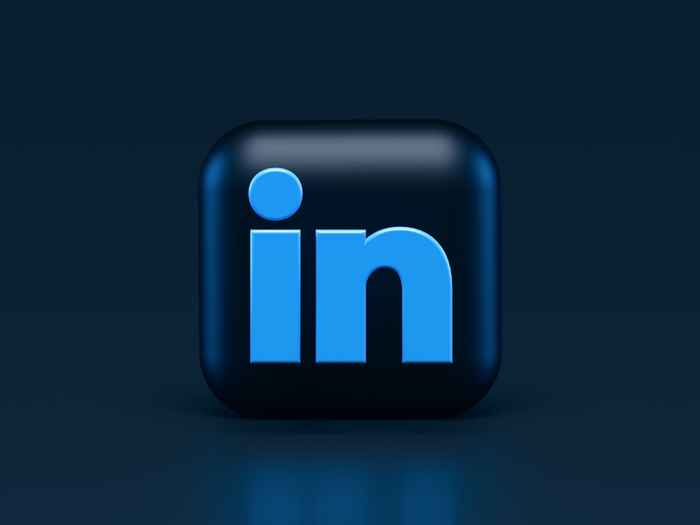How to create a product page on LinkedIn
Learn how to create and use LinkedIn product pages to build awareness around your brand and its products.
When it comes to having a presence on social channels, many companies make the mistake of overlooking LinkedIn. Since its launch in 2003, LinkedIn has exploded in popularity.
While the focus remains highly on business and career-related content, companies often share transparent insights into how their business works. Not only is LinkedIn an asset to gaining leads and potential employees, but it's necessary for networking, digital marketing, and advertising your business.
Long before social apps like Facebook and Instagram, LinkedIn began connecting people on a business level. Even though LinkedIn is currently the only social platform in the world that is focused solely on professionalism, it creates connections that would not have been possible otherwise.
Today, very few professionals do not have a LinkedIn profile, including businesses. The user base is massive, and the platform itself has seen substantial growth relatively quickly.
Launching in 2003, LinkedIn had only 245 users, but by 2004, it had grown a reputation within the small business community. A partnership with American Express encouraged growth from the hundreds to the hundred thousand through 2004 and 2005.
It did not take long for LinkedIn to begin to generate revenue, and with the unveiling of features such as jobs and subscriptions, the success only continued to grow. In 2006, LinkedIn launched public profiles, which meant that professionals could easily connect with others at their workplace and in their industry.
In 2008, LinkedIn went global, and the platform has only grown from there. Few people are unfamiliar with LinkedIn, and the interface is exceptionally user-friendly and includes an easy-to-install app for Android and iOS users.
Today, LinkedIn networks in 200 countries and has more than 800 million members.
Though it began in a living room, LinkedIn highlights the importance of making connections today, personal or professional. There are many reasons that your business must have a relevant LinkedIn page, and we'll discuss them in this guide.
When it comes to social channels, you want consumers and those in your industry or niche to feel your brand's presence. Establishing this presence can be difficult because there's no question that social platforms are inundated with content.
Regardless, you want to take advantage of the audience out there for you and supply them with the information and inside look into your business they need. LinkedIn is the perfect platform to make this happen.
Few things are more important than how your past, current, and potential connections perceive your company. Without an established brand reputation, it's harder to make sales or gain an online following.
Though not the original main goal of LinkedIn, it's not uncommon for the platform to bring new customers and leads to your business. Also, your professional connections must view your brand in the right light because if they trust you, they're sure to pass your information along to their friends, family, and clients.
We live in a time where businesses face judgment based on their online presence, even if they have a brick-and-mortar location. You cannot ignore internet sales, and even though it's considered a professional platform, your client base has their own LinkedIn accounts, and they will search through LinkedIn to view your company.
It's easy to build your brand reputation through LinkedIn because you have complete control over all editorial rights. LinkedIn allows plenty of space for updates that can contribute to your brand's reputation, including a platform in which to promote your services, products, or share brand news.
In addition to letting other businesses and your customer base see what you're up to and what you can provide, you can also keep an eye on how others speak about your business. Monitoring how your business is discussed on social platforms allows you to correct any glaring issues by responding helpfully to those who have had a less than stellar experience.
Reaching out directly to past customers that have a complaint is the best way to rectify it immediately. Also, other businesses and consumers will see your attempt to make things right, and they'll know that they're in good hands if they choose to work with your company.
You can't grow your brand if people don't know it exists. Granted, increasing your brand's awareness on social channels can be challenging, as industries are oversaturated, and algorithms cater to friends and family content over business content. On LinkedIn, most content is business content.
LinkedIn company pages allow users to showcase announcements that may have been professional public relations announcements in the past. We know that social channels exclude the need for traditional media services to a certain extent and the perks that LinkedIn offers.
LinkedIn members that choose to follow your company page will receive your updates. You can also broadcast about hires, events, successes, case studies, and company milestones! These are all fantastic public relations techniques to follow, and the LinkedIn platform makes it easy.
Building a company on LinkedIn allows you to access your targeted demographic. The community on LinkedIn is global, so the potential to reach your audience, both businesses and private consumers alike, is excellent.
You can use your company page to network with new business prospects while connecting and building new business relationships. LinkedIn allows for a high level of communication without meeting face-to-face, which opens the door to new opportunities.
When you share a post or an update on LinkedIn, you can choose to market that post to your target audience by selecting "target audience" from the list when you publish an update. This option will allow you to choose who to share the update with, and you can target them using the following criteria:
When you target your content to the right audience, you can ensure that they see it and interact with it, which means they'll see more of your content in the future. It's a fantastic way to make sure your updates are in front of relevant people.
Google gives a lot of credit to LinkedIn and company pages, which means that having a LinkedIn page for your company is fantastic for your search engine optimization results. In short, your company page has a high probability of appearing high in Google search results, as long as you've listed under the correct and relevant search terms.
When filling out the information for your LinkedIn page, you'll want to ensure that you're optimizing it to come up on Google. You can do this the same way you'd optimize your website, using search terms in the description and throughout the copy.
LinkedIn is one of the best platforms to pick up potential leads. The LinkedIn company pages allow you to use lead generation forms, which means you can pay the platform to boost the visibility of your updates with your target audience. You can include a call to action within these updates, encouraging leads to take action to reach out to you or visit your website.
Most social channels offer options like this, but LinkedIn forms automatically populate for you so that you can submit them with one simple click. LinkedIn has reported three times more conversions than other major platforms that allow the same type of advertising reach.
Many business owners assume that because LinkedIn is full of like-minded professionals and entrepreneurs, proud of their businesses and looking to network, they won't benefit from the competition. This is a complete misconception. LinkedIn is packed to the brim with people who want your products and services, and you just have to find them.
Analytics is a crucial component of all social channels. You need to understand who is looking at your content and why, and the analytics dashboard for your page will tell you everything you need to know.
Page analytics are available on LinkedIn, and it's full of information that you can use to better cater to and reach your audience. You'll get a ton of information regarding the reach and engagement on your social shares, and you can collect insight on how you compare to your competitors.
When you pay attention to the performance of the content that you're posting, you can learn what type of content works best for your brand. You'll also gain insight into what shares aren't working, and from there, alter it to fit your audience's preference.
The whole point of creating content, whether it's on your LinkedIn page or inside the pages of your blog, is to connect with your audience in a way that will always resonate with them. Creating a LinkedIn page is an excellent way to reach out, and it's much easier to do than you might think.
Many people stay away from creating new company pages because the process seems daunting, but the steps for making a brand page on LinkedIn are minimal.
Now that you know the incredible benefits that come with creating a LinkedIn page for your company, it's time to go into a bit of detail regarding how to get started. LinkedIn has made it ridiculously easy to set up a company page like most social platforms. You need to know your personal information and the keywords you're using to target your audience, and that's about it!
Head over to linkedin.com and look around. The home page will give you a bit of information about LinkedIn and its brand mission, and you'll see the option to create an account.
If you don't have a personal account already, this is the time to make one. It only takes a few minutes, you'll need your email address and a password, and you don't have to fill in the details, such as your biography, or upload your resume if none of that pertains to you.
Once you're set up on LinkedIn, you'll move your cursor to the work tab in the top right corner of the main page of your dashboard. Next, scroll to the bottom of the box that pops up and click on the create page button, titled "Create a Company Page."
At this point, LinkedIn will prompt you to enter the type of business in which you'd like to create a company page. You'll choose the size, industry, and niche that best fits your business.
LinkedIn offers the option to choose small, medium, or large businesses, and the industry list is extensive as they have global companies from around the world use their platform. If your niche is super specific, try to choose what fits you best. There is an option for "other," but it's best to get more detailed than that.
While there are various ways for your brand page to show up in search results and LinkedIn suggestions, you'll still want to ensure that you list it under the correct category from the start. If you're undecided, don't worry, you can always go back and change it later, plus the LinkedIn customer service team is accommodating should you run into trouble updating.
Filling out your company details on your LinkedIn profile is crucial to attracting the right consumers and network connections to your profile page. Before filling out your company details, ensure that you've done your research and know which keywords to weave into the text.
These keywords do not have to be different from those on your website, but they should be relevant to the results found in search engines that you'd expect your potential clients to type in. If you don't have a website and your business is relatively new, plenty of available keyword tools, such as KWFinder and SEMRush, can help you get going.
LinkedIn allows members to link to their website and other social channels, so if you have a presence on a different platform, make sure you link it. You'll want to make your profile as detailed as possible, so your visitors know what to expect from you and your business. The clearer and more descriptive you are, the more likely it will be that you'll attract the right demographic to your page.
Again, you can always go back and change this information, so if you're not as prepared as you'd like to be, you can still fill out the basic information about your company on your LinkedIn page.
LinkedIn will not let you move forward in the page creation process if you don't check the verification box after filling out your details. The app will ask you to verify that all of the information you've entered is correct, so read back through it and ensure that you've supplied your visitors with everything you want them to know.
Once you've completed this process, check the verification box and go on from there. This check will affirm that you have the authority to create and take ownership of your new page.
Check your details one last time and click "Create Page." LinkedIn will officially create your company page, and you can move forward to tailor your page and offer even more details to your new connections. When you click on "Start Building Your Page," you can upload your logo and add a much more detailed description, which is another fantastic place to take advantage of search engine optimization.
After you publish your page, you'll want to make sure that you add your location details, as this is huge for search engine results. Google loves to supply local users with your business's location, which is fantastic for SEO, especially if you've got an actual store instead of a virtual-only situation.
In the days and weeks that follow your page creation, you'll want to personalize it to your brand as much as possible. Post, share, comment on relative content in your brand voice, and put yourself out there. Begin to make connections and shine up your page, adding showcase pages and perfecting your message.
Remember, even though LinkedIn operates on a concept of professional connections, you have to let your audience see your business's human, personal side. Consumers are no longer interested in the cold face that brands put on, and they want to see the people behind the brand.
Transparent content that shows behind-the-scenes information is imperative to this message, and you can unfold the type of content you'd like to post as your page grows. Things may change over time, which is entirely okay if you stay authentic and accommodating.
LinkedIn offers the option to choose paid promotions through them, or you can promote for free by utilizing a few tricks to get your business in front of your desired demographic.
Optimize your profile as much as you possibly can. Don't overstuff your keywords but look for ways to work in keywords and post content that resonates with your audience whenever possible.
The type of business you want to promote on LinkedIn is irrelevant. Don't optimize your business page only, do your personal profile too! The results will be well worth the time.
You can't promote your business if you don't have anything to promote, and this is where high-quality content comes into play. Articles and posts that show the inner workings of your business and that relate to your industry as a whole are a fantastic way to bring in views, comments, and shares.
Like most social platforms, the more views your LinkedIn company page receives, the more it will appear in relevant newsfeeds and algorithms. When followers interact with your page, they'll see your content more often, so make sure you're giving them the content they want to see.
The internet is currently overwhelmed with content, so yours has to be engaging and exciting. The best way to do this is by remaining authentic.
Most of the world prefers to consume content in videos, clips, stories, and reels. LinkedIn allows its members to post videos for followers to provide a first-hand account of what is happening and your latest business news. You can quickly post a video of yourself introducing yourself or talking a bit about operations. Put yourself in your followers' shoes and try to remain as true to yourself as possible. Remember, they want to see what you're all about, not a copy of others. The more engaging the content, the more visibility your page will receive.
You can advertise your business for free by getting active within LinkedIn groups. Similar to Facebook groups, LinkedIn offers the group feature as a place for like-minded individuals to gather from within an industry or business niche. LinkedIn groups are a fantastic way to network and meet other professionals and market your brand in many cases.
The whole point of social channels is to build a network of people that will move your career or company forward in a positive light. LinkedIn makes this more than possible, and the overall professionalism of the platform is refreshing from others that don't prioritize building business owners up.
Most businesses that create and adequately maintain their LinkedIn company page see great success. There are so many opportunities on LinkedIn to connect with those that can help you market your business, as well as similar business owners that can and will happily answer your questions.
Business owners are consumers, too, so don't forget that a presence on LinkedIn opens the door to many opportunities to build leads and create conversions. If you haven't considered making a LinkedIn company page for your brand, now is the time to get started. Not only will it boost your brand visibility, but it can open up a whole new world of business connections for you.
Learn how to create and use LinkedIn product pages to build awareness around your brand and its products.
A content marketing strategy and sharing on LinkedIn can help people and brands establish expertise and authority while engaging with audiences. Here are tips to get started.
Whether searching for a job, expanding your professional network, or building a personal brand, optimizing your LinkedIn profile can help you reach your professional goals.




